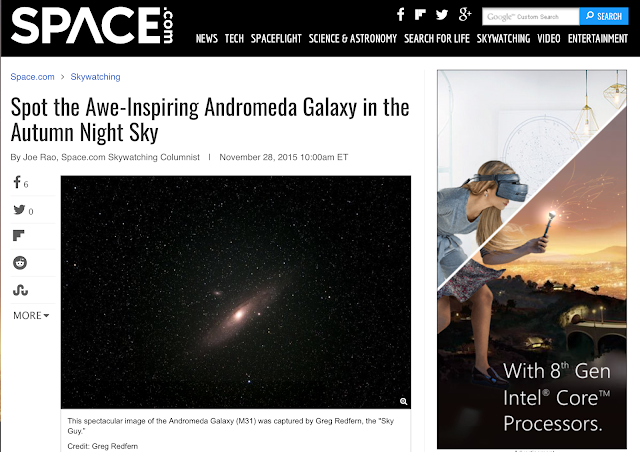TAKE A FABULOUS LOOK AT OUR GALAXY'S CLOSEST BIG NEIGHBOR

Hey, Space Placers! SPACE.COM Feature Using My M31 Pic Check out this great article on M31, the Andromeda Galaxy. From a dark sky site you can see M31 with your own eyes and I have photographed it with an iPhone several times at sea as well as on land. This pic of M31 was taken underway at sea when the galaxy was only 6 degrees above the sea horizon! The spiral arms are visible Greg Redfern You can see it now in the early morning sky. Sky Guy Back in VA

